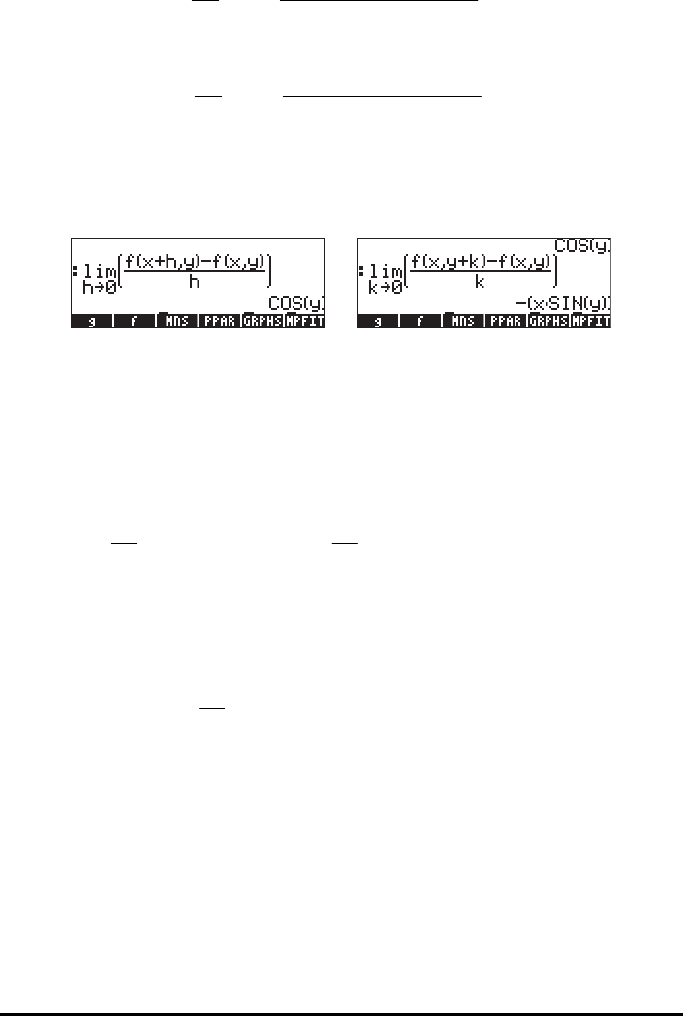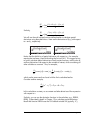
Page 14-2
.
Similarly,
.
We will use the multi-variate functions defined earlier to calculate partial
derivatives using these definitions. Here are the derivatives of f(x,y) with respect
to x and y, respectively:
Notice that the definition of partial derivative with respect to x, for example,
requires that we keep y fixed while taking the limit as h0. This suggest a way
to quickly calculate partial derivatives of multi-variate functions: use the rules of
ordinary derivatives with respect to the variable of interest, while considering all
other variables as constant. Thus, for example,
,
which are the same results as found with the limits calculated earlier.
Consider another example,
In this calculation we treat y as a constant and take derivatives of the expression
with respect to x.
Similarly, you can use the derivative functions in the calculator, e.g., DERVX,
DERIV, ∂ (described in detail in Chapter 13) to calculate partial derivatives.
Recall that function DERVX uses the CAS default variable VX (typically, ‘X’),
h
yxfyhxf
x
f
h
),(),(
lim
0
−+
=
∂
∂
→
k
yxfkyxf
y
f
k
),(),(
lim
0
−+
=
∂
∂
→
() ()
)sin()cos(),cos()cos( yxyx
y
yyx
x
−=
∂
∂
=
∂
∂
()
xyyxyyx
x
202
22
=+=+
∂
∂


















